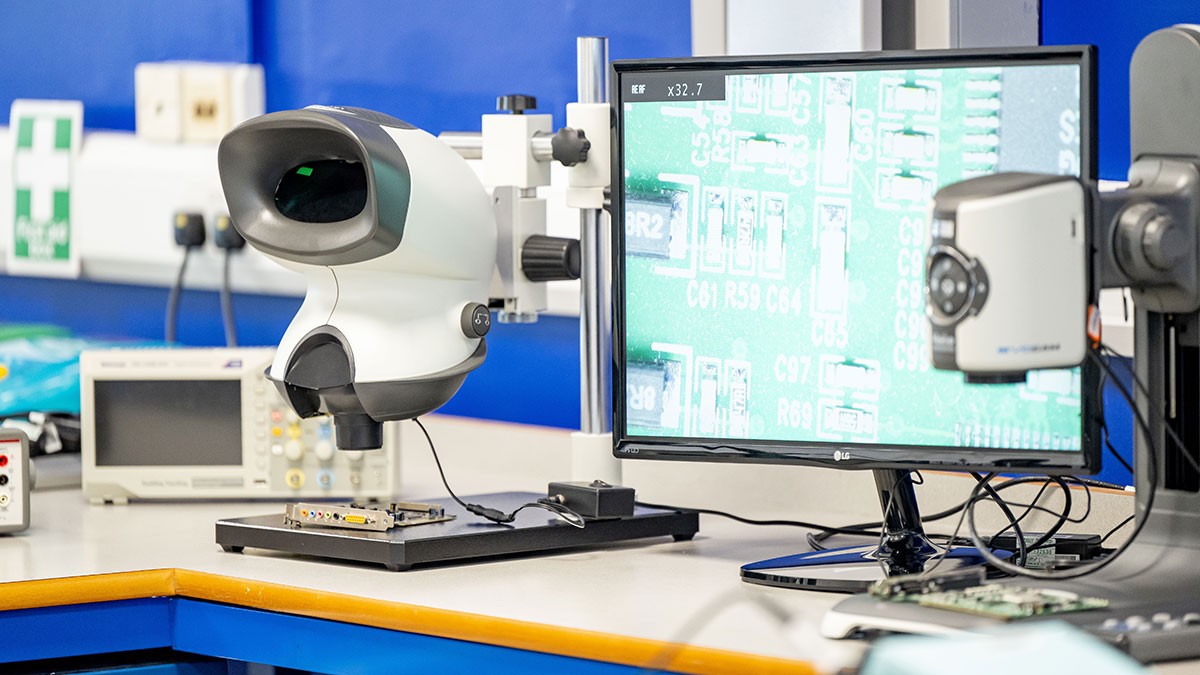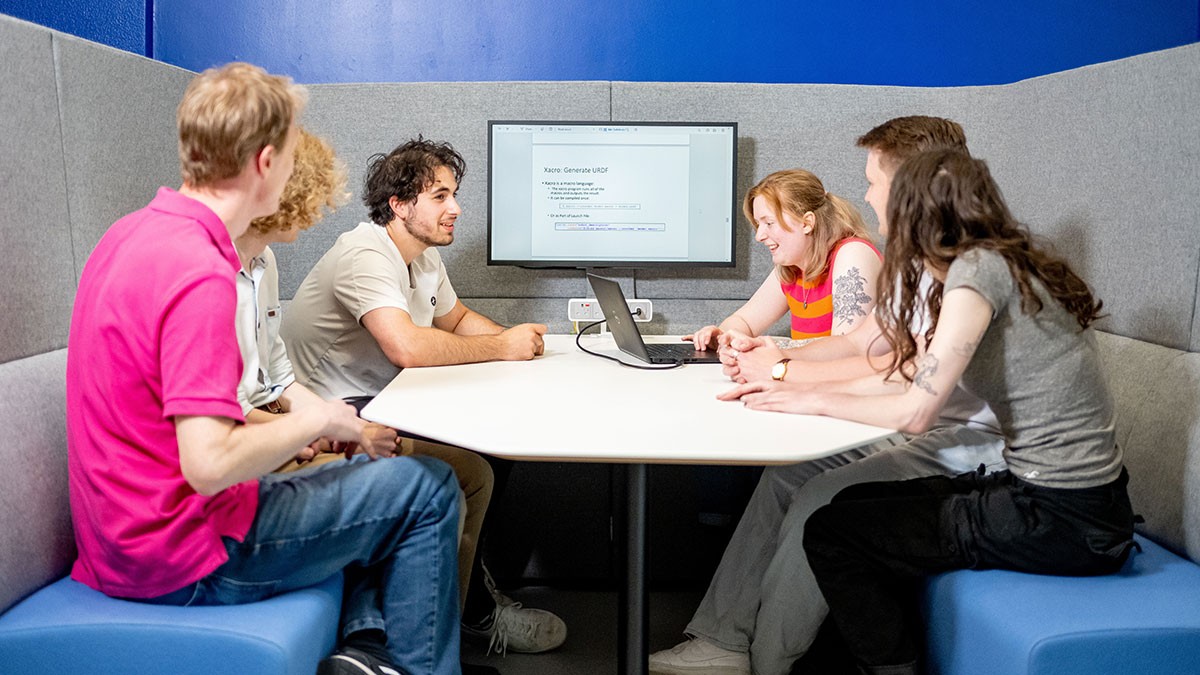
Electronic engineering teaching facilities
Teaching labs
Our teaching labs, which have recently undergone a £1.4m refurbishment, consist of 750 m2 of lab space on the fourth floor of the AB building (Frank Whittle Building). These labs and associated workshops contain state-of-the-art hardware equipment, software and fabrication facilities for use by our students for practical demonstration, and proof of concept activities. The labs have dedicated technicians on hand to help if required.
First Year Laboratory
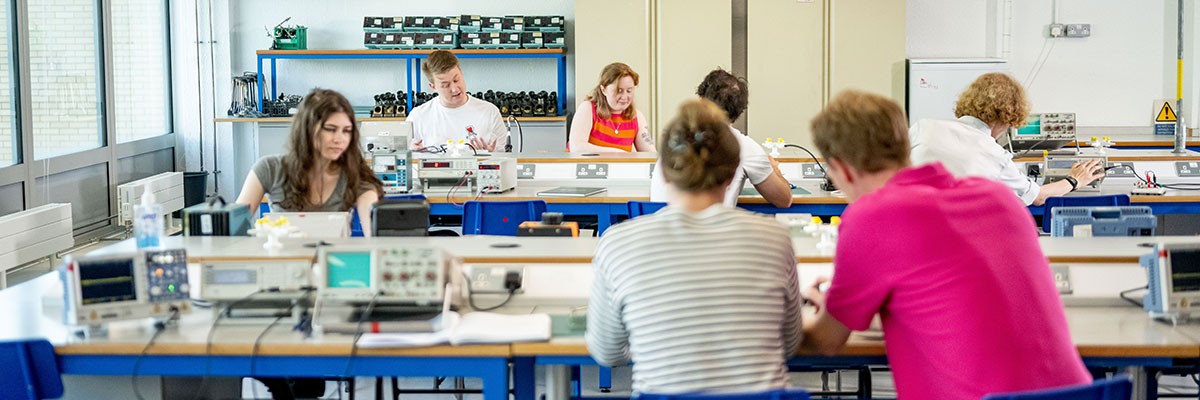
This lab space is where our Year 1 cohort start their learning journey. Seating up to 60 students per session, it is equipped with a huge range of electrical test equipment including analogue oscilloscopes and digital oscilloscopes, DC power supplies, function generators, digital multimeters and temperature-controlled soldering units with extraction.
In this lab students benefit from:
- Large learning space that facilitates both individual and group project work
- Dedicated technician for year group
- Cutting edge equipment which they can use in a safe environment
- Peer supported ‘lab pals’
- Place to demonstrate their newly-learnt skills.
All students start at a basic level and progress throughout the year, gaining new skills which give them a good foundation in the subject area and working on different project throughout the year.
Second Year Laboratory
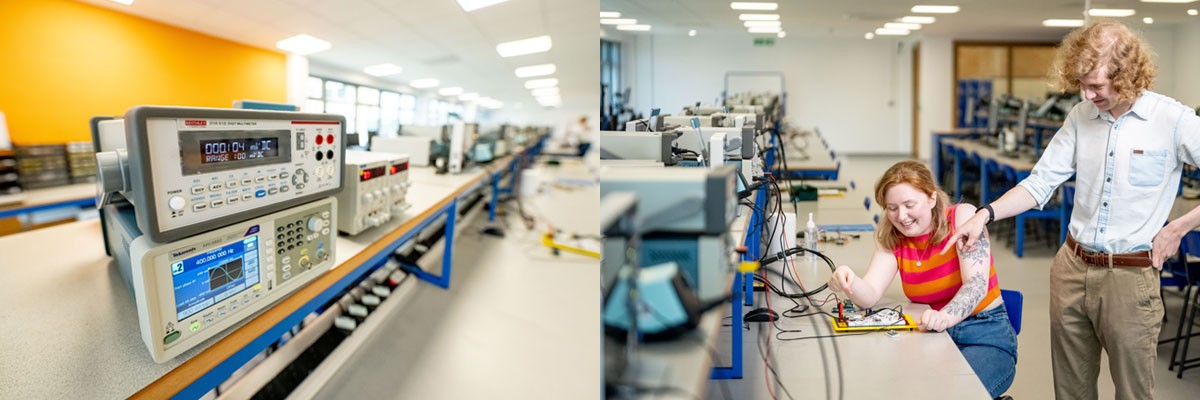
This lab can seat up to 64 students and has been equipped with the latest cutting-edge digital oscilloscopes, power supplies, function generators, digital multimeters and Weller temperature-controlled soldering with extraction. It also has 15 Windows 10 workstations that are available for our students to use for PCB design, circuit simulation, Arduino IDE, and MATLAB.
The lab features a student collaboration booth with seating for up to 8 people and a 32” 4K Sony TV – creating a flexible, user-friendly area for small groups to collaborate.
In this lab students benefit from:
- Large lab space for individual and group project work
- Collaboration booth space - available for breakout sessions/student meetings
- Dedicated technician for year group
- Cutting-edge equipment including 3D printer
- Peer supported ‘lab pals
- Chance to work collaboratively with staff and student peers.
Embedded Systems Laboratory
This lab is home to our EyasSat educational satellites and surface mount soldering facilities. It also houses our pick and place soldering station. Five EyaSat training satellites are used within this lab on a Year 2 module and there is plenty of space here for Year 3 students to work on their dissertation projects.
The lab can seat 32 students and is equipped with:
- 16 high specification computers including Xilinx Vivado ML Enterprise and Synplify
- Surface mount technology fabrication and rework facilities
- SMD capable Metcal Soldering system
- Trotec Laser cutter.
PC suite and short course laboratory
This lab seats 12 students and is equipped with a variety of high bandwidth oscilloscopes, spectrum analysers, network analysers and other RF test instruments as well as the normal standard laboratory equipment.
The PC suite is located in this space and offers 15 Windows 10 computers loaded with relevant software (PCB design, Multisim circuit simulation and general Microsoft Office applications).
This lab space offers a range of specialist equipment:
- Oscilloscopes
- Spectrum analysers for RF courses or projects
- 3D printer
- Computers
- Soldering facilities
- Two satellite modem test beds (used by MSc students)
- Student collaboration booth with seating for 8 and a 32” 4K Sony TV.
Student Fabrication Facility
This workshop is used for student training exercises and project works. It offers four pillar drills, a buffing wheel, a milling machine, two hand drills and various other tools to support their needs within this space. This is used throughout the year for creating or fabricating student projects.
Specialist teaching facilities
Robotics and Artificial Intelligence Lab
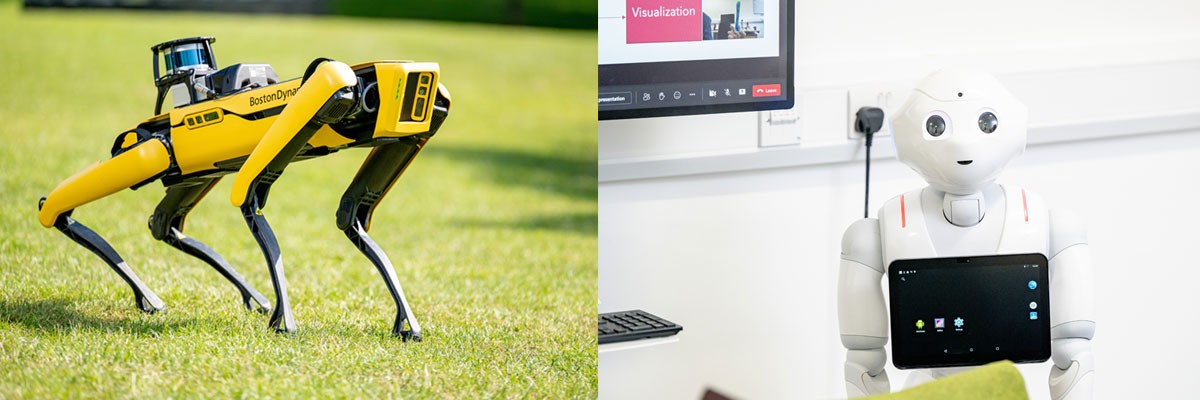
Our Robot Lab focuses on developing key AI and perception strategies for multiple robotics platforms.
Students undertaking our Robotics module learn to use the industry and research standard Robotics Operating System (ROS) to control multiple robots, and develop an understanding of key robotics algorithms for navigation, mapping and position estimation.
Students are also be exposed to our world-leading research in perception for robotics and have the opportunity to work with state-of-the-art robotics platforms like our Boston Dynamics SPOT and Softbank Robotics Pepper.
Undergraduate and postgraduate students get an opportunity to work in the Robotics Lab either during their taught modules or as part of their doctoral research under the supervision of an academic.
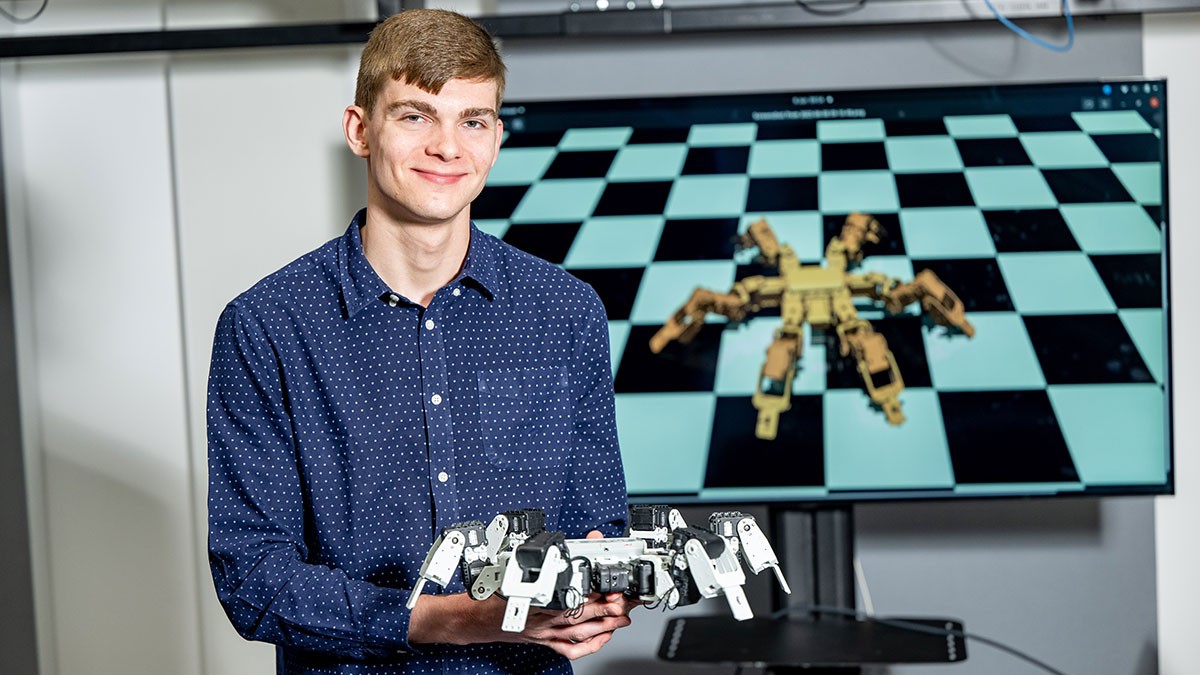
PhD student Rogier Fransen is studying how complex robots can learn to walk over different materials and terrains, based purely on touch sensing.
IoT sensors
Within our 'Internet of Things' (IoT) modules, we programme sensor nodes in order to develop a practical understanding of IoT tasks, scheduling, communication, reliability, performance and the process of application development. We use Advanticsys Motes which have built-in temperature, humidity and light sensors for our application.
Surrey Space Centre facilities
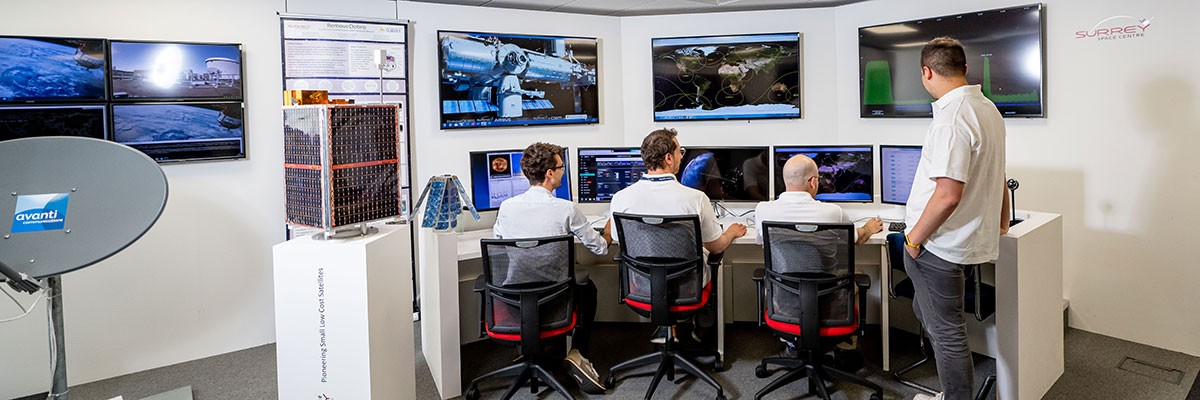
In our Surrey Space Centre labs, students build electronics for instruments, payloads, and even full platforms as part of their undergraduate final year and postgraduate student projects. This work sits alongside our real world research, meaning that students work in an authentic environment and follow professional practices.
During the Space Avionics module, students use the groundstation facilities to support their learning in telemetry and telecommand, communications theory and spacecraft operations. This includes practical labs using our antennas to communicate via low Earth orbit (LEO) satellites using voice and packets, and HD video across a GEO satellite link.
In the Digital Design with VHDL module, students use the latest Xilinx Zynq and Vivado tools to develop competencies in system-on-a-chip design, processor design and hardware acceleration, and advanced timing simulations using hardware description languages.
